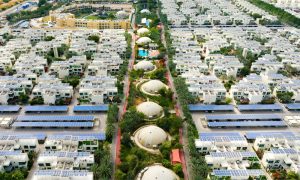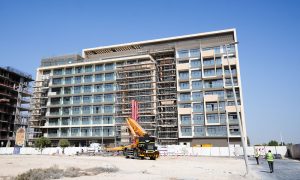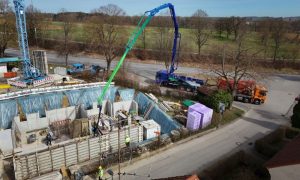Longer-term perspective to decision making key to tackling GHG emissions says AESG’s Lindsey Malcolm
Assessing embodied carbon and operational carbon at every stage of a project can provide significant knowledge for positive change

In an exclusive interview with Middle East Construction News (MECN), Lindsey Malcolm, Associate Sustainability Director at AESG said that construction stakeholders must take a longer-term perspective to decision making, in the battle to curtail greenhouse gas (GHGs) emissions.
“There is a tendency to focus on the immediate future rather than thinking about the full life-cycle of a project. Including GHG emissions as part of the decision-making process can help this by putting another perspective (beyond cost) on the table,” he states.
“As humans we sometimes struggle to think long-term about things, but that is a really important skill for those of us working in the built environment because we are creating developments that could last 50 or even 100 years. The impacts over that lifetime can become significant and the small changes we make now to reduce them can have a huge legacy.”

Discussing what construction stakeholders can implement in the near term to effectively and quickly cut down GHG emissions on projects, Malcolm notes that embodied carbon and operational carbon emissions should be assessed at every stage of a project.
“Knowledge is a powerful tool for change and knowing what the potential impacts could be will help us all to take greater action now and make as significant a level of reduction as possible for every project going forward.”
With regards to whether there is enough awareness about the built environment’s significant contribution to global GHG emissions, Malcolm notes that the understanding is there and that it is a regular topic of conversation with AESG’s clients and contributors.
That said, he points out, “We can always do more, whether it is developing an understanding of our own impacts or educating others on ways to reduce impacts, knowledge and understanding are key to building awareness. As sustainability professionals we are also advocates for change, using the tools at our disposal to measure, monitor and assess potential impacts and using our technical understanding to advise on solutions to minimise and mitigate those impacts.”
Pressed for his reaction to a report by the WMO that said there’s a 50:50 chance of global temperature temporarily reaching the 1.5-degrees Celsius threshold in the next five years, Malcolm responds, “The significance of the WMO’s announcement cannot be understated. It’s clear we are seeing first-hand the impacts of the climate crisis, and for a climate like ours that is certainly a concern.”

He concludes, “We must take this as a call to action for everyone working in the built environment. It really highlights the need to continue to assess, reduce and mitigate the impacts of our activities in the most comprehensive and robust manner that we can.”






















